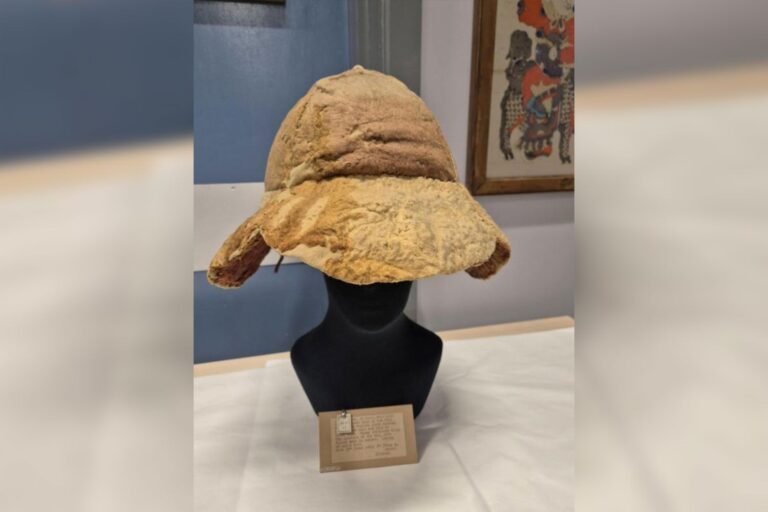BMI Calculator – Check your Body Mass Index for free!
A 2k-year-old sun hat worn by a Roman soldier in Egypt
The felt cap—one of only three surviving examples of its kind—was recently conserved by a museum in England
The newly conserved felt hat is now on view at the Bolton Museum in Bolton, England.
Bolton Library and Museum Services
What the ancient Romans wore may not be among the most pressing questions facing archaeologists, but it is one that attracts interest among the general public.
Now, a fashion-themed display at the Bolton Museum in Bolton, England, will allow visitors to see how a Roman soldier in ancient Egypt dealt with the excruciating power of the sun roughly 2,000 years ago: by donning a felt cap. As it turns out, even the Romans understood the power of a good hat.
Newly restored after more than 100 years in storage, the hat was donated to Bolton’s first museum, the Chadwick Museum, by noted Egyptologist and archaeologist William Matthew Flinders Petrie in 1911. Petrie was known for his extensive excavations in Egypt and for developing a primary method of dating artifacts from ancient civilizations.
Fun fact: Putting ancient Egypt into perspective
Cleopatra’s death in 30 B.C.E. is closer to the year 2025 than it is to 2550 B.C.E., when the Great Pyramid of Giza was built.
The hat is believed to date to sometime after Cleopatra’s death in 30 B.C.E., which marked the end of the Ptolemaic dynasty and the beginning of Roman rule over Egypt. It was likely made for someone who was part of the Roman military in Egypt.
In a statement from Bolton Council, the museum’s conservator, Jacqui Hyman, says the felt hat was flat and moth-bitten when removed from its box for the first time in a century. “Sensitive treatment was paramount due to its fragility,” she adds.
Though moths had damaged much of the felt, Hyman was able to support and stabilize those areas with a similar hand-dyed fabric, maintaining the original shape of the hat, according to the statement. A local business funded the painstaking restoration process.
“This hat was made to be worn, but if only it could talk and tell us who made it and who wore it,” Hyman says in the statement.
The hat is similar to other Roman head coverings dated to around 200 C.E., though it was likely adapted for Egyptian sandstorms and the desert heat. The Bolton Council says it is one of only three surviving examples of its kind. The other two are housed at the Whitworth art gallery in Manchester and a museum in Florence, Italy.
Per Encyclopedia Britannica, the ancient Romans “generally left [the head] uncovered,” though the lower classes and the formerly enslaved sometimes donned a felt cap known as the pileus, whose design was based on the pilos, a Greek sailing hat. The most common type of Roman head covering was a “simple skull-cap” whose shape was “more elevated, though still round at the top,” according to a 19th-century classicist.
The restored hat will be on view in the entrance to the Bolton Museum’s Egyptian galleries through September, when it will move to a permanent display in another part of the museum.
“It’s an incredible moment for Bolton to display such a rare and well-preserved item from ancient Egypt,” says Nadeem Ayub, the council’s executive cabinet member for culture, in the statement.
Get the latest stories in your inbox every weekday.
BMI Calculator – Check your Body Mass Index for free!

